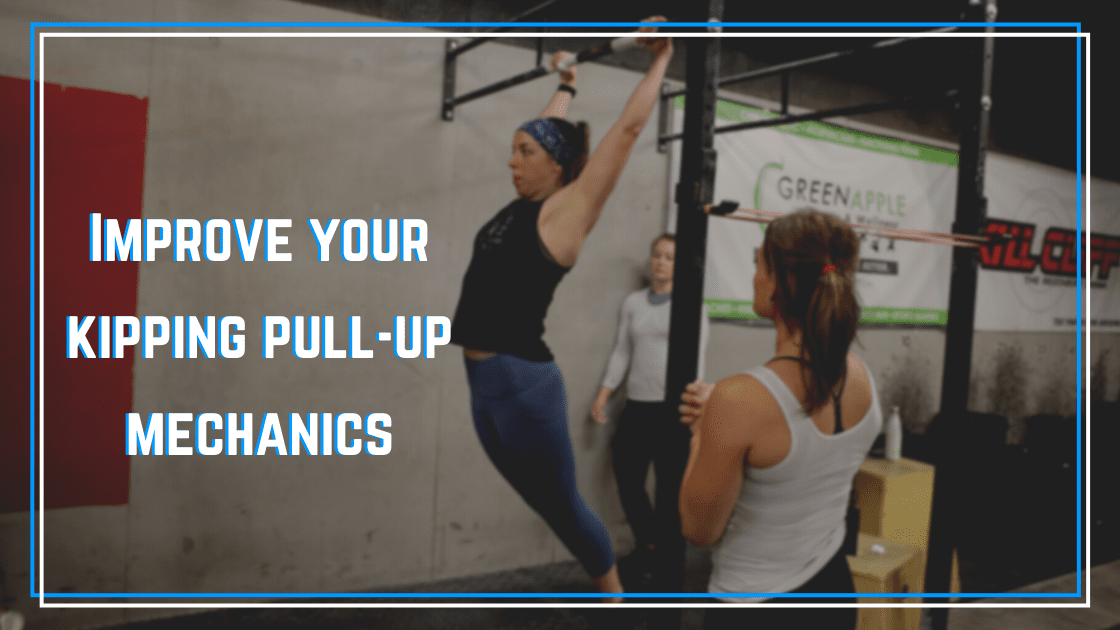The kipping pull-up is often a polarizing debate in the fitness community. I’ve written about this many times, and my viewpoint is that when done properly, the kipping pull-up is a good upper body pulling plus conditioning exercise (read this article for more). The shoulder strength & control that is developed from a technically sound kipping pull-up is great, BUT when done with poor technique, I think kipping pull-ups lead to the shoulder being overloaded and the development of shoulder pain. This article won’t review kipping pull-up pre-requisites, so please see the two articles linked about for more on my kipping pull-up views before proceeding.
I see a lot of CrossFit athletes that know their kipping form is off but don’t know how to begin improving their kipping pull-up efficiency. This article will serve as an outline for improving kipping mechanics but will not focus on the butterfly pull-up.
Improve Your Kipping Pull-up Mechanics
Step 1: Understand What Proper Hollow Hang Positioning Looks Like
This may sound simple, but more often than not, I see really poor hollow body positioning in athletes. What we want is flexion of the entire spine, a posterior tilt of the pelvis, and closing of the shoulder angle from the lats contracting (as you’ll see in the below video). Instead, we often see a pike where the hips flex. We discuss this in more depth in my shoulder pain with kipping pull-ups article, but in short, this just throws lots of unnecessary force on the shoulder when kipping that leads to poor performance and injury.
Step Two: Master the Hollow Position on the Ground
We can’t start building the kip hanging from a bar without first working on positioning on the ground. The following two videos do a great job breaking down what we want to see on the floor to ultimately improve kipping pull-up mechanics:
View this post on Instagram
Better hollow mechanics and abdominal strength will help all gymnastics movements improve. Download our free Gymnasty Core WODs program for some great accessory WODs!
Step 3: Bridge the Gap Between the Floor and Kipping Pull-ups On The Rig
For many, the jump from hollow/arch on the floor to hanging from a bar is too big of a jump. So this standing hollow body drill with lat engagement from the band can be a great one to bridge the gap for athletes. Notice how Pamela first pulls her rib cage down (hollow body position) then pulls the band forward to engage her lats. This is what we want to see when we begin working from hanging: the shoulders and core controlling the movement, NOT a piked hip position where the hips generate all the motion.
Step 4: Hit Proper Positions on the Rig
Now that we are ready to get up on the rig and work on kipping form there, we need to progressively increase the skill level at which we are working. We’ll start with easier variations and progress to faster ones that require more strength and control.
To the following box, drill gives the athlete some tactile feedback that helps him or her feel the opening and closing of the body. It’s a great start towards improving positioning.
View this post on Instagram
For a more dynamic exercise, using a band can also give some feedback to the athlete to help with them feeling the opening and closing of body angles that happens when an athlete properly performs the kip.
View this post on Instagram
Finally, we want to progress to kipping pull-up drills where there isn’t any tactile feedback. This three-position kip drill is great, and we can then progress to faster and faster speeds of kip swings by rapidly moving to and from the hollow & arch positions.
View this post on Instagram
Step 5: Continue to Build Kipping Pull-up Strength with Other Drills
Once we’ve developed a solid kip form, we can then build that into a good kipping pull-up. But long term development of maximal efficiency in the kipping pull-up will require continual strengthening of both the hollow/arch positions using drills like the below and continued strengthening of strict pull-ups (both for volume and with weight). Remember that kipping pull-ups and butterfly pull-ups are NOT a substitution for strict pull-up strength. Rather and separate skills that both should be developed in fitness athletes.
View this post on Instagram
Our most popular program for improving the kipping technique and lat strength is Building Lats to Fly. If you are serious about improving your mechanics, check this program out! Thousands of athletes have seen rapid improvements in their CrossFit gymnastics skills with this plan.






